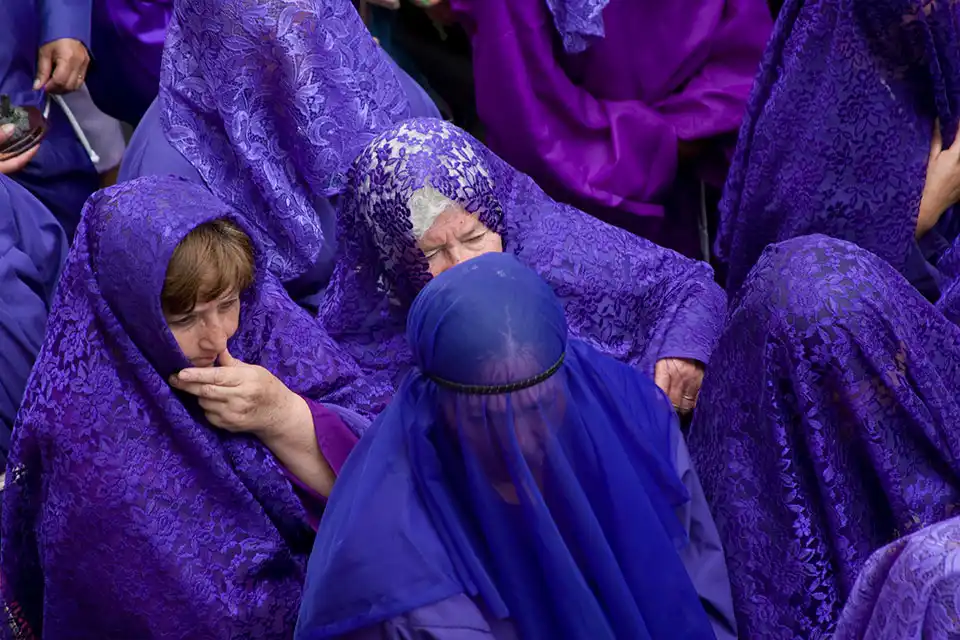Jesus Almighty Procession in Quito marks Easter with color, ritual, and faith, commemorating Christ’s sacrifice. Catholics nationwide gather for Holy Week’s penitence ceremonies, climaxing in the dramatic Procesión de Jesús del Gran Poder.
Cucuruchos durante la Procesión de Jesús del Gran Poder.
The Jesus Almighty Procession: A Cultural Spectacle
Emblematic in its extravagance, the ceremony features masked participants, the Cucuruchos and Verónicas; some wearing morbid purple cone hats, some self-flagellating, some carrying punishingly heavy crosses, some swathed in barbed wire and bleeding, parading slowly to frightening music. All is in aid of exhibiting their devotion and repentance in the most ostentatious ways possible.
Quito’s Good Friday procession, drawing 200,000+, mirrors southern Spain’s traditions, inherited from Seville. After ending Muslim rule in 1248, Seville’s Christian resurgence and the 1481 Inquisition influenced America, including Quito. This Baroque-laden event, promoting Catholic devotion, reflects Seville’s historical role as a gateway to the Americas.

For such an iconic procession, it is fitting that the most iconic of Catholic institutions, San Francisco, is at the heart of it. The march begins and ends at the city’s first Catholic church, Plaza San Francisco bursting with devotees dressed in the eerie traditional costumes. Casa Gangotena’s third-floor panoramic terrace offers the perfect viewing platform for the proceedings – without getting caught up in the fervour of the march itself. And with a special buffet laid out for the occasion, the Old Town hotel is ideal place spend Easter in Quito.
The square awakens at 6AM on Good Friday, as people bring bouquets for the floats, ready by 10AM. From 8AM, 1,000 Cucuruchos receive purple cloaks. By 11.30AM, floats with religious icons emerge to a silent crowd. The procession, featuring Cucuruchos and Verónicas, moves through the city, ending at 4.40PM with the Veneration of the Cross. Celebrations continue at home.
Experience Easter in Quito: A Unique Tradition
The Jesus the Almighty Procession is profoundly moving, both for Catholics comprehending the extent of Christ’s sacrifice, and for onlookers witnessing the devotion of the participants. For Christians and non-Christians alike, Easter in Quito is a singular experience, and an extraordinary insight into quiteño culture.



